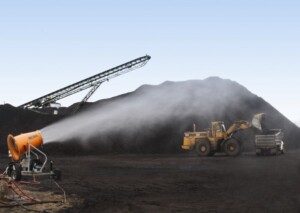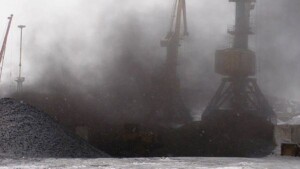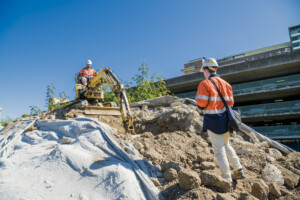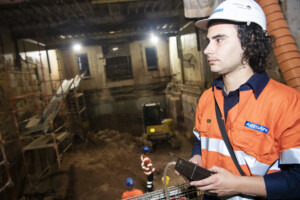
In 2021, New South Wales introduced changes to exposure standards that affect companies and workers in the mining industry. From 1 February 2021, the exposure standard for coal dust in mines was reduced, while an exposure standard for diesel particulate matter was introduced for the first time.
The updated exposure standards are:
- Coal dust: TWA (time-weighted average) of 1.5 mg/m3 (previously 2.5mg/m3)
- Diesel particulate matter: TWA of 0.1 mg/m3 (measured as sub-micron elemental carbon).
NSW was the first jurisdiction in Australia to implement a standard for diesel emissions in the mining sector. This came about because of an increased risk of exposure to accumulated exhaust in underground mines.
Risks of coal dust
Coal miners are at risk for respiratory diseases caused by dust from mines. When inhaled, coal dust remains in the lungs. Long-term exposure can cause coal mine dust lung disease (also known as black lung disease). Miners with combined exposures to coal and crystalline silica dust can also get mixed dust pneumoconiosis.
These diseases cannot be cured, so prevention is critical.

Risks of diesel emissions
There is growing awareness of the risks of exposure to diesel exhaust in the mining industry.
Diesel exhaust emissions contain a complex mixture of gases, vapours, aerosols and particulate matter. Most mines use diesel engines in some form. Underground miners are exposed to concentrations of diesel particulate matter significantly higher than those in any other occupation.
Controlling diesel emissions: your obligations
All mines should have a documented strategy to control diesel emissions, to minimise people’s exposure as much as possible. This forms part of your obligations under
the Work Health and Safety (Mines and Petroleum Sites) Regulation 2014.
You should do a risk assessment to help you identify and control areas and tasks where workers may be exposed to diesel exhaust. Start with a risk assessment:
- identify areas of exposure risk
- audit site practices
- review and monitor risk control measures to ensure compliance with the exposure limit and maintenance of low atmospheric concentrations.
As part of the risk assessment process, you should consider workplace practices, training and culture:
- worker training on driving behaviour and effect on emissions
- maintaining awareness of best practice methodologies and new technological innovations
- use of appropriate respiratory protective equipment
- workplace area atmospheric monitoring and ventilation monitoring.
Some practical steps you can take to minimise diesel emissions include:
- controlling diesel exhaust emissions at the source
- use of low emission diesel engines
- emission reduction devices (particulate filters, catalysts)
- use of low emission fuels and quality lubricants
- provision of air conditioned (filtered) operators’ cabins
- control of diesel engines in areas of identified risk
- minimising the number of diesel engines operating at same time.
- robust maintenance and exhaust gas emissions testing
- controlling exposure to airborne diesel emissions
- good ventilation strategies and systems
 Air monitoring for diesel particulate exposure
Air monitoring for diesel particulate exposure
Air monitoring is a particularly important measure in controlling the risk of diesel particulate exposure. It’s one of your obligations under clause 50 of the Work Health and Safety Regulation 2017.
How often to conduct monitoring, and what methods to use, depend on the risk. You should especially consider:
- monitoring people who are more likely to be exposed to diesel particulate
- monitoring over a range of standard operational processes as well as exposure which occurs during abnormal mining operations
- static positional monitoring to determine airborne concentrations of diesel particulate matter, and the effectiveness of implemented control measures.
Air monitoring samples must be collected in accordance with Australian Standard sampling methodologies under the direction of a suitably competent Occupational Hygienist independent to the mine, with subsequent analysis undertaken by a NATA accredited laboratory using the NIOSH Method 5040.

How Airsafe can help
We analyse baseline airborne dust exposure
As experts in air quality monitoring, Airsafe knows how to conduct an effective air monitoring program, beginning with placement of equipment, which is critical to the overall sampling strategy and interpretation of results. We use two different air monitoring methods:
- Personal dust monitoring, where the air monitoring equipment is attached to the worker, with the sampling device within the breathing zone to estimate the exposure. The exposure is then compared against the exposure standard.
- Static dust monitoring, collected using air equipment to assess the concentration of dust released into the air by processes, or to assess the effectiveness of controls such as local exhaust ventilation (LEV).
We create a comprehensive health control plan
All mines, quarries and petroleum sites are required to develop and implement a health control plan. A health control plan sets out how the operator will manage the risks to health associated with their mining or petroleum operations, as required by clause 26 of the Work Health and Safety (Mines and Petroleum Sites) Regulation.
Airsafe has many years of experience creating health control plans. We can help you make sure this important document is legally compliant.
We provide guidance for ongoing monitoring and analysis
Monitoring of a worker’s health is legally required when the hazard has the potential to exceed exposure limits, or when the level of risk from the hazard varies. Airsafe can guide you about the appropriate ongoing air monitoring and analysis program and help you to implement it.
We detail corrective actions
Where possible, you should always try to remove or eliminate hazards from the workplace, for example by using a different process, or changing the way a job is done.
Airsafe will help you determine the right corrective actions to control generation of and limit worker exposure to dust, so far as reasonably practicable.
For help controlling coal dust and diesel exposure, call Airsafe on (02) 9555 9034.



